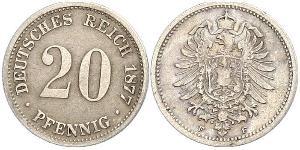1 SIGLOS (Vendida por $52.0)
Persia, Achaemenid Empire (455-420 BC) AR Siglos Coin. King w. Spear & Bow!
Denomination: AR Siglos
Reference: Carradice Type IIIb.
Mint Date: 485-420 BC (Time of Darios I to Xerxes II )
Condition: A single schopmark in obverse, dark oxidation toning, otherwise VF+
Diameter: 17mm
Material: Silver
Weight: 5.36gm
Obverse: Persian king in kneeling-running stance right, holding spear and bow, quiver over shoulder.
Reverse: Incuse punch.
The Achaemenid Empire or Achaemenid Persian Empire (550-330 BC) was the first of the Persian Empires to rule over significant portions of Greater Iran, and followed the Median Empire as the second great empire of the Iranian Peoples. At the height of its power, the Achaemenid Empire encompassed approximately 7.5 million square kilometers and was territorially the largest empire of classical antiquity.
The empire was forged by Cyrus the Great, and spanned three continents, including territories of Afghanistan and Pakistan, parts of Central Asia, Asia Minor, Thrace, much of the Black Sea coastal regions, Iraq, northern Saudi Arabia, Jordan, Israel, Lebanon, Syria, and all significant population centers of ancient Egypt as far west as Libya. It is noted in western history as the foe of the Greek city states in the Greco-Persian Wars, for freeing the Israelites from their Babylonian captivity, and for instituting Aramaic as the empire's official language. Because of the Empire's vast extent and long endurance, Persian influence upon the language, religion, architecture, philosophy, law and government of nations around the world lasts to this day.
em>.
Darius I or Darius the Great (c. 549 BC – October 486 BC), was a Zoroastrian Persian Shahanshah (Emperor) of Persia. He reigned from 29 September 522-October 486 BC as the third Achaemenian King and called by some arguably "the greatest of the Achaemenid kings".
He managed not only to "hold together the empire" (as himself recorded), but also to extend the empire founded by Cyrus the Great further in all directions; east Indus valley, north Saka tribes, and west Thracia and Macedonia. His reign lasted thirty-five year and completed the work of his Achaemenian predecessors. Under Darius and the generation he belonged to, Achaemenid Iran become one of the major powers in the world. However the successful expansion of the empire was not Darius' most important achievements, but centralized administration of his huge empire and the high cultural and artistic level reached as demonstrated by his buildings projects (initiated or completed) at Susa and Persepolis.
In the lands he conquered, Darius continued Cyrus' path of active benevolence to non-Iranian faiths most evidently seen in his construction of a huge temple to Amun-Re in Egypt. Darius completed the work of Cambyses II and issued the code of laws in Egypt and become the lawgiver to Egyptions.
His entire empire saw a legal reform and development of juridical systems. Indeed most peoples of Darius' empire started to use the Old Persian word "dāta" (law, King's law) in related documents.
Darius was an emperor with unrest reign; busy with lots of building programs in Persepolis, Susa, Egypt, and elsewhere. Toward the end of his reign he decided to punish Athenians. But another new revolt in Egypt (probably led by the Persian satrap) had to be suppressed too and Darius' health was failing which prevented him to act in person. These were serious expeditions and under Persian law the Achaemenian kings were required to choose a successor before starting such expeditions. Upon his decision to leave, Darius prepared his tomb at Naqsh-e Rostam and appointed Xerxes his oldest son by Atossa as his successor. But he did not leave Persis again; he died in October 486 BC.
His reign was marked by upheaval and unrest: twice Babylonia revolted, Susiana three times, and the Ionian revolt precipitated several Persian expeditions against Greece, including a defeat at Marathon. Datis the Mede captured Eretria and exiled tyrant of Athens and landed at Marathon in Attica. In 490 BC the Persian army of Datis weredefeated by a heavily armed Athenian infantry (9,000 men, supported by 600 Plataeans and some 10,000 lightly armed "attendants") under Miltiades.

|
Publicado por:
anonymous 2016-10-20 |
|
||
|
||
|
||
5 Korona Imperio austrohúngaro (1867-1918) Plata Franz Josep ...
grupo tiene 17 monedas / 15 precios
⇑
20 Pfennig Alemania Plata Wilhelm I, German Emperor (1797-1888)
grupo tiene 58 monedas / 55 precios
⇑

_Persia-600-300-_oIKX9ISrvcAAAFX8y8aLgCv.jpg)

_Persia-300-150-bokKbzbiFcYAAAFLbIHeDJY7.jpg)
 English
English






-300-150-ZDsKbzbiSMsAAAFRYnVauzdX.jpg)








